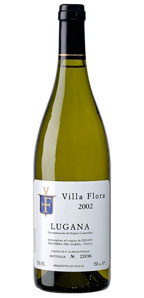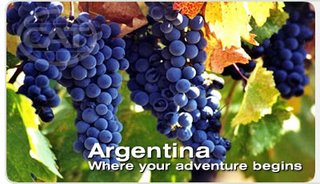THAT CUTE LITTLE YERING FROG

“Every winemaker has a dog. At Yering we have a Frog.” That’s the story behind the name of the wine. Well, we have a frog as a pet of our own befriended when it was discovered under a beautiful Rodochiton shrub some five years ago. The shrub has long since gone but we call the froggy Rodick in its memory. He never got to like the name but no matter. It’s fond of a little cosy shrub by the back door on the patio. Every summer it’s back there to keep us company as we quaff our favourite wines or discover new ones. It watches us bemused and sometimes tries to butt in with its friendly croaking message. Sorry, Rodick, we don’t always understand the message you’re trying to convey but we always appreciate your company, so we raise our glasses to your next arrival in May with a glass from your froggy cousin Down Under.
2005 Yering Frog, Yering Station, Shiraz/Viognier, Yarra Valley, Australia – 14.5% alcohol
(Majestic £6.99, or £5.99 if you buy two)
A little sibling of the Yering Station Shiraz/Viognier, Yering Frog shows typical Shiraz flavours of blackberries and spice on the nose tamed by a bit of earthiness and refreshed by soft mint and some floral notes derived from Viognier. Well structured and balanced with good acidity, it’s easy to drink and very impressive. The tannin is young but very palate-friendly and calls out for some beef. But if you are not a regular beef-eater and have only a few minutes to spare, try this recipe which, even if not ideal to accompany the Frog, will still do the trick. Finish the meal off with cheddar as we did, this time with Westcombe. Bearing in mind the price tag and the joy it gives, you can’t go wrong with a cute little Yering Frog, even if it’s not as cute as ours.
Cheerio!
Chicken breasts for 2 – preparation time 3 minutes; cooking time – 16 minutes
Ingredients: 2 chicken breasts, 4-6 smoked streaky bacon rashers; salt, freshly ground black pepper, chopped fresh (or dry) herbs: parsley, coriander leaves; 1 tbsp of olive oil
1) Heat the olive oil in a frying pan with an oven-proof handle (medium heat);
2) Pre-heat oven to 200°C/Gas 6
3) Sprinkle the chicken breasts with salt, freshly ground black pepper, parsley, coriander leaves on both sides;
4) Wrap up neatly each chicken breast in bacon rashers;
5) Fry the chicken breasts in the frying pan for 3 min, turning once;
6) Place the frying pan with the chicken breasts in a pre-heated oven for 13 minutes;
7) Take the frying pan out of the oven - use special oven gloves or a thick towel;
8) Serve with salad, saffron rice or pasta and a glass of wine.





